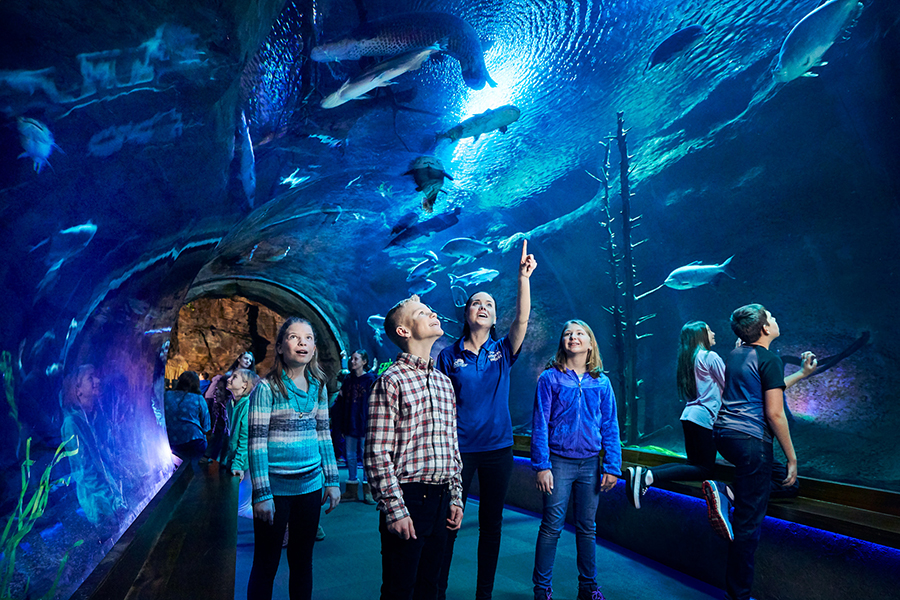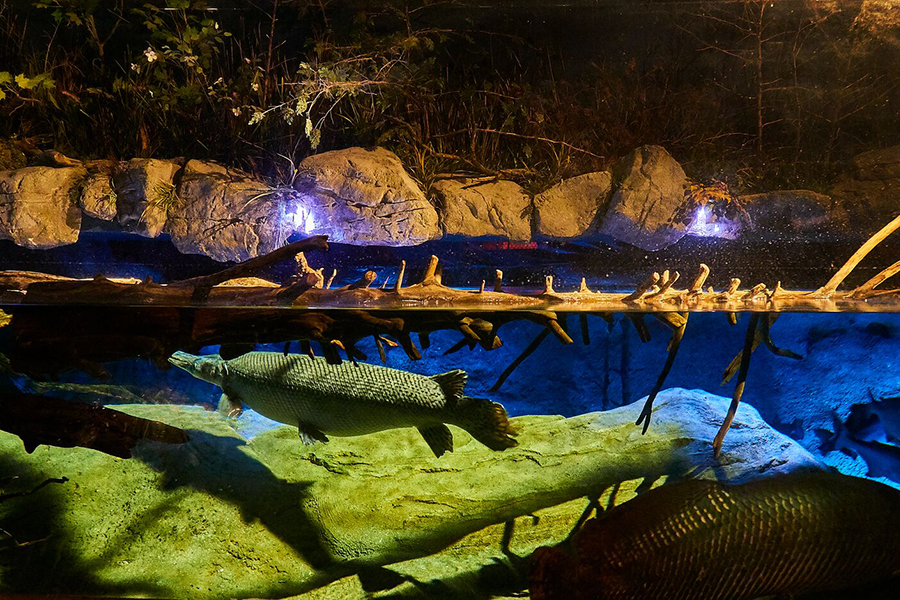
About the Exhibit
Look up, down, and all around! This immersive exhibit showcases some of the most incredible real-life river monsters from freshwater ecosystems around the globe. From North America to South America, and across Africa, Asia, and Australia, these giants have evolved to dominate their unique habitats in extraordinary ways.
Start by scanning the water for a massive, six-foot fish with a red tail, flat mouth, and a distinctive hump on its back. That’s an arapaima, a native of the Amazon River Basin in northern South America. These ancient fish can grow up to 440 pounds and are known as gulper feeders. They open their huge mouths to create a vacuum, sucking in water, and any unlucky prey, straight into their bony, toothed palates. Arapaima are also equipped with a modified swim bladder that allows them to breathe air, helping them survive in oxygen-poor waters where few others can.
Next, glance along the gravel bottom, you might spot the wide, smooth form of a freshwater whipray. Native to the estuaries of Australia, this is the only ray species confined solely to fresh and brackish waters, where saltwater and freshwater meet. These rays are true giants; the largest individuals in their genus can span up to 6.5 feet across and weigh over 1,300 pounds. Their stealthy movement and sheer size make them one of the more awe-inspiring creatures in this exhibit.

As you make your way out of the tunnel, take note of your surroundings — you’re now standing inside a replica of a beaver den. Beavers are nature’s engineers, reshaping entire ecosystems by felling trees and constructing dams, lodges, and breakwaters. Their large, flat tails are multitools in themselves: storing fat, aiding in swimming, slapping the water to warn off predators, and even serving as a seat while they gnaw away at wood. Beavers don’t just build — they transform, creating wetlands that benefit countless other species.
